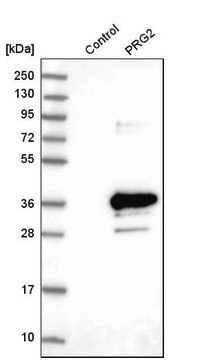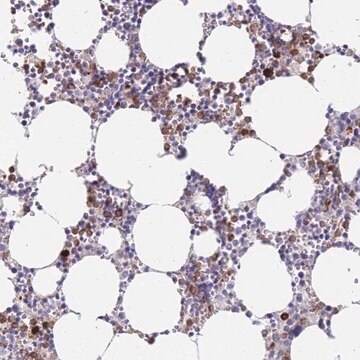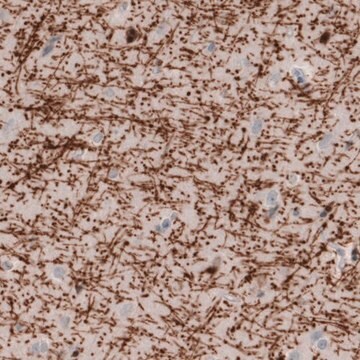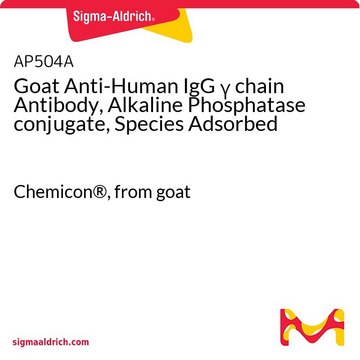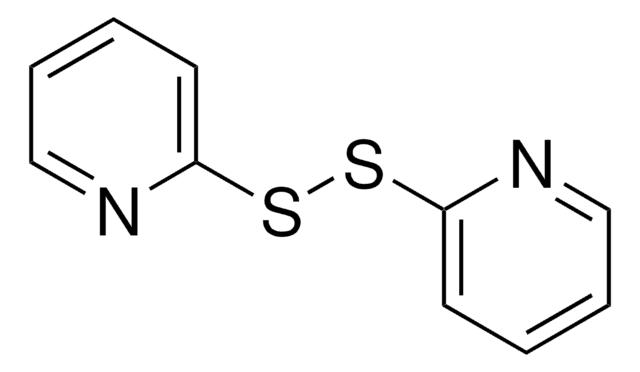CBL419
Anti-Eosinophil Major Basic Protein Antibody, clone BMK13
clone BMK13, Chemicon®, from mouse
Synonym(s):
EMBP
About This Item
Recommended Products
biological source
mouse
Quality Level
antibody form
purified antibody
antibody product type
primary antibodies
clone
BMK13, monoclonal
species reactivity
human
should not react with
horse, mouse, rat
manufacturer/tradename
Chemicon®
technique(s)
ELISA: suitable
immunohistochemistry: suitable (paraffin)
western blot: suitable
isotype
IgG1
NCBI accession no.
UniProt accession no.
shipped in
wet ice
target post-translational modification
unmodified
Gene Information
human ... PRG2(5553)
Specificity
Application
Western blotting: purified normal human eosinophils were treated with digitonin (5mg/mL) for 10 minutes before boiling in sample buffer and run on a 15% SDS-PAGE. Purified MBP migrates at ~ 14kDa, and typical human samples range from 10-16kDa.
ELISA development for MBP estimation.
Optimal working dilutions must be determined by the end user.
Inflammation & Immunology
Immunoglobulins & Immunology
Physical form
Storage and Stability
Other Notes
Legal Information
Disclaimer
Not finding the right product?
Try our Product Selector Tool.
Storage Class Code
12 - Non Combustible Liquids
WGK
WGK 2
Flash Point(F)
Not applicable
Flash Point(C)
Not applicable
Certificates of Analysis (COA)
Search for Certificates of Analysis (COA) by entering the products Lot/Batch Number. Lot and Batch Numbers can be found on a product’s label following the words ‘Lot’ or ‘Batch’.
Already Own This Product?
Find documentation for the products that you have recently purchased in the Document Library.
Our team of scientists has experience in all areas of research including Life Science, Material Science, Chemical Synthesis, Chromatography, Analytical and many others.
Contact Technical Service